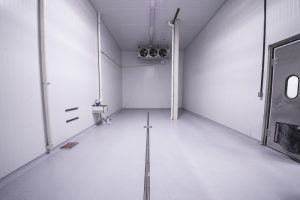How to Choose Materials for Cold Room Insulation
Cold rooms play a crucial role in preserving perishable goods, ensuring that temperature-sensitive products remain fresh and safe for consumption. One of the key components in the construction of an effective cold room is insulation. The right insulation materials can significantly enhance energy efficiency, reduce operational costs, and ensure the longevity of the cold storage facility. This article explores how to choose materials for cold room insulation, focusing on types, characteristics, and installation considerations.
1. Importance of Insulation in Cold Rooms
A. Energy Efficiency
Proper insulation helps maintain the desired temperature within a cold room, minimizing energy consumption. Effective insulation reduces heat transfer between the interior of the cold room and the external environment, leading to lower cooling costs.
B. Product Preservation
Insulation plays a vital role in maintaining a stable temperature, which is essential for preserving the quality of perishable goods. Fluctuations in temperature can lead to spoilage, making reliable insulation critical.
C. Environmental Impact
Choosing the right insulation materials can also contribute to sustainability efforts by reducing energy consumption and carbon footprint.
2. Types of Insulation Materials
A. Polyurethane Foam
Polyurethane foam is one of the most popular insulation materials used in cold room construction due to its excellent thermal resistance.

Pros: High R-value, lightweight, and good air sealing properties.
Cons: Higher initial cost and potential for off-gassing if not properly installed.
B. Polystyrene
Polystyrene insulation comes in two forms: expanded (EPS) and extruded (XPS). Both types are effective for cold room applications.
Pros: Cost-effective, moisture-resistant, and good thermal performance.
Cons: Lower R-value compared to polyurethane and less effective at sealing air leaks.
C. Fiberglass
Fiberglass insulation is widely used due to its affordability and availability.
Pros: Inexpensive, non-combustible, and resistant to moisture when properly installed.
Cons: Lower R-value compared to foam options and can absorb moisture if not adequately protected.
D. Reflective or Radiant Barrier Insulation
This type of insulation reflects heat away from the cold room, making it particularly useful in warm climates.
Pros: Effective at reducing heat gain, lightweight, and easy to install.
Cons: Less effective in extremely cold environments and requires proper installation to ensure effectiveness.
3. Key Factors to Consider When Choosing Insulation
A. R-Value
The R-value measures insulation’s thermal resistance; the higher the R-value, the better the insulation performance. When selecting insulation materials for cold rooms, prioritize those with high R-values to optimize energy efficiency.
B. Moisture Resistance
Cold rooms often experience high humidity levels, making moisture resistance a critical factor in insulation material selection. Choose materials that can withstand moisture without degrading or losing effectiveness.
C. Cost
While the initial cost is an important consideration, factor in long-term energy savings when evaluating insulation materials. Sometimes, investing in higher-quality insulation can lead to significant savings on operational costs over time.
D. Ease of Installation
Consider the ease of installation and whether professional installation is required. Some materials may be easier to work with and install than others, impacting labor costs and timelines.
4. Installation Considerations
A. Professional Installation
For optimal performance, consider hiring professionals for insulation installation, especially for complex cold room designs. Professional installers can ensure proper sealing and coverage, minimizing air leaks and maximizing insulation effectiveness.
B. Continuous Insulation
Ensure continuous insulation across walls, ceilings, and floors to eliminate thermal bridging. Gaps or discontinuities in insulation can significantly reduce its effectiveness, leading to increased energy costs.
C. Vapor Barriers
Installing vapor barriers is essential in cold rooms to prevent moisture buildup, which can compromise insulation and lead to mold growth. Proper placement of vapor barriers helps protect insulation materials and maintains a stable environment inside the cold room.
5. Conclusion
Choosing the right insulation materials for cold room construction is vital for ensuring energy efficiency, product preservation, and overall operational success. By understanding the different types of insulation available, considering key factors such as R-value, moisture resistance, and installation requirements, you can make informed decisions that meet your specific cold storage needs. Investing in quality insulation not only protects your products but also contributes to sustainability efforts and long-term cost savings. With the right approach, your cold room can function effectively, ensuring the integrity of stored goods while minimizing energy costs.

Recent Comments